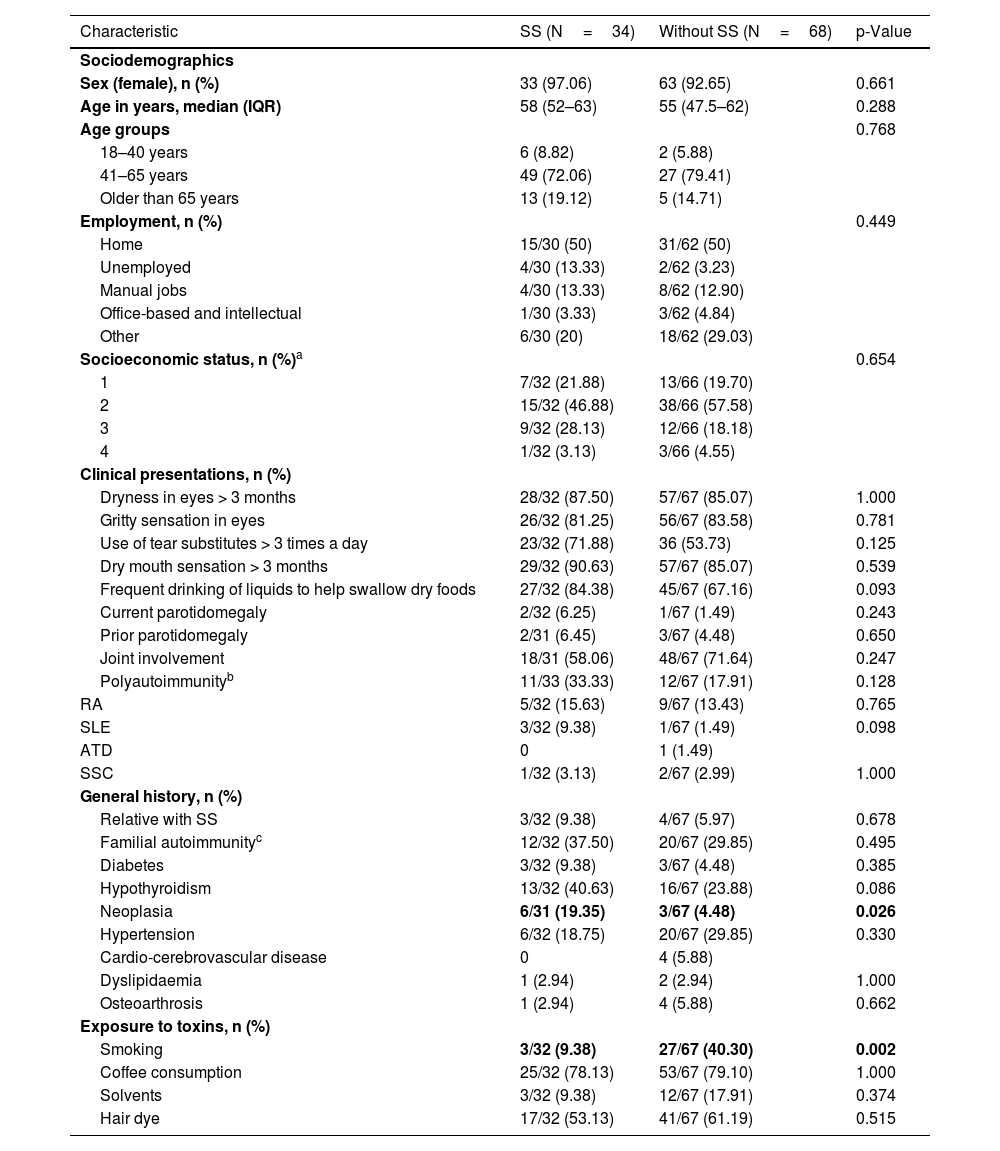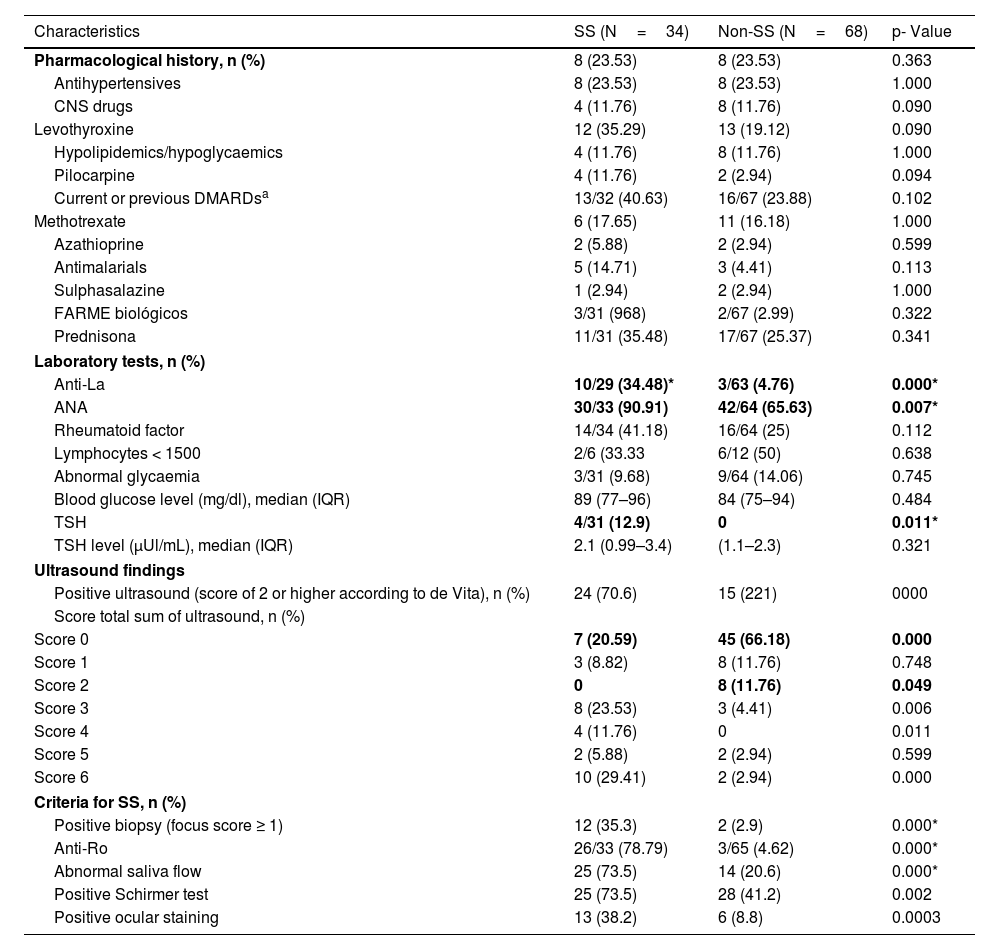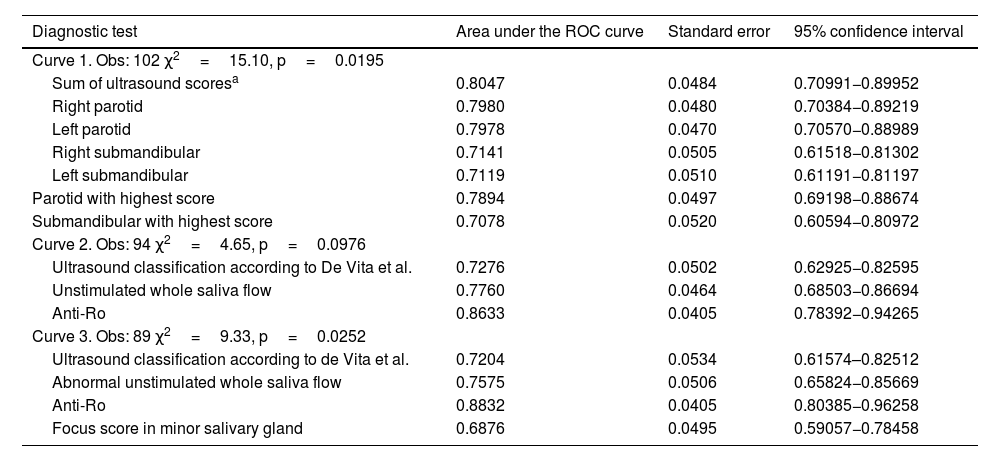To determine the operational characteristics of salivary gland ultrasound (SGU) in the diagnosis of Sjögren’s syndrome (SS) in a population of colombian patients with dry symptoms.
Materials and methodsStudy of diagnostic tests in patients with dry symptoms who consecutively attended the rheumatology consultation (2018–2020). Sociodemographic and clinical data were obtained through a survey, paraclinical and ophthalmological tests, minor salivary gland biopsy, unstimulated salivary flow and SGU (score 0–6 based on De Vita) were done. Sensitivity, specificity, positive (PPV) and negative (NPV) predictive values (Stata 15®) were calculated. The receiver operating characteristics (ROC) curve was developed.
Results102 patients were included (34 SS and 68 non-SS), mean age 55.69 (±11.93) years, 94% women. Positive ultrasound (score of 2 or more) was more frequent in the SS group, (70.6% vs. 22.1%, P<0.0001). The sensitivity was the same for grade 2 and 3 (70.59%), with a higher specificity (89.71%) for grade 3 (PPV 77.42% NPV 85.92). The ROC curve from the sum of the glands by means of ultrasound was better than those of the independent glands. The ROC curve of the ultrasound presented a greater area under the curve (0.72 [0.61−0.82]) than that of the histological analysis (focus score) (0.68 [0.59−0.78]), P=0.0252.
ConclusionSalivary gland ultrasound is a useful and reliable method for the classification of SS. Its use could be considered in the future within the SS classification criteria.
Determinar las características operativas de la ecografía de glándula salival (EGS) en el diagnóstico del síndrome de Sjögren (SS) en una población de pacientes colombianos con síntomas secos.
Materiales y métodosEstudio de pruebas diagnósticas en pacientes con síntomas secos que asistieron a la consulta de reumatología (2018-2020). Se obtuvieron datos sociodemográficos y clínicos a través de una encuesta, pruebas paraclínicas, oftalmológicas, biopsia de glándula salival menor, flujo salival no estimulado y EGS (puntuación 0-6 basada en De Vita). Se calculó la sensibilidad, la especificidad y los valores predictivos positivo (VPP) y negativo (VPN) (Stata 15®). Se desarrolló la curva de características operativas del receptor (COR).
ResultadosSe incluyó a 102 pacientes (34 con SS y 68 sin SS), edad media±desviación estándar de 55,69±11,93 años, 94% mujeres. La ecografía positiva (puntuación de 2 o más) fue más frecuente en el grupo de SS, (70,6% vs. 22,1%, p<0,0001). La sensibilidad fue igual para el grado 2 y 3 (70,59%), con una especificidad mayor (89,71%) para el grado 3 (VPP 77,42% VPN 85,92). La curva COR a partir de la sumatoria de las glándulas por medio de ecografía, fue mejor que las de las glándulas independientes. La curva COR de la ecografía presentó una mayor área bajo la curva (0,72 [0,61-0,82]) que la del análisis histológico (puntuación por focos) (0,68 [0,59-0,78]), p=0,0252.
ConclusiónLa EGS es un método útil y confiable para la clasificación del SS. Se podría plantear su uso a futuro dentro de los criterios clasificatorios de SS.
















